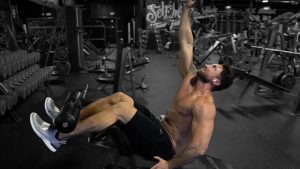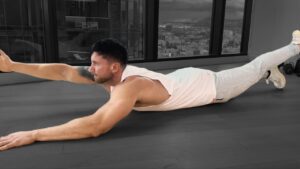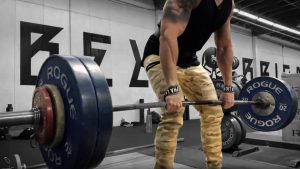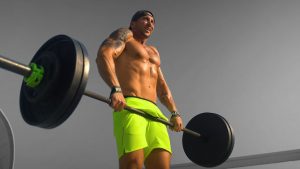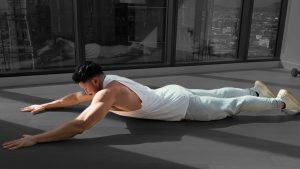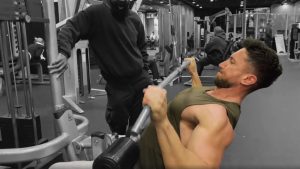When you're trying to build your chest and back, you need to focus on heavy compound lifts that will stimulate the greatest overall growth.
At the same time, you can't spend all your time focusing on one muscle group.
Throwing in some accessory work for lagging muscle groups can help you balance out your physique without sacrificing your primary goal.
The dumbbell pullover exercise is a powerhouse for your upper body. It allows you to work the back and chest, hitting them at slightly different angles than most other exercises do.
Whether you're trying to build a little more width in your pecs, or a little more thickness in your lats, you need the dumbbell pullover exercise in your workout routine.
How To Perform The Dumbbell Pullover
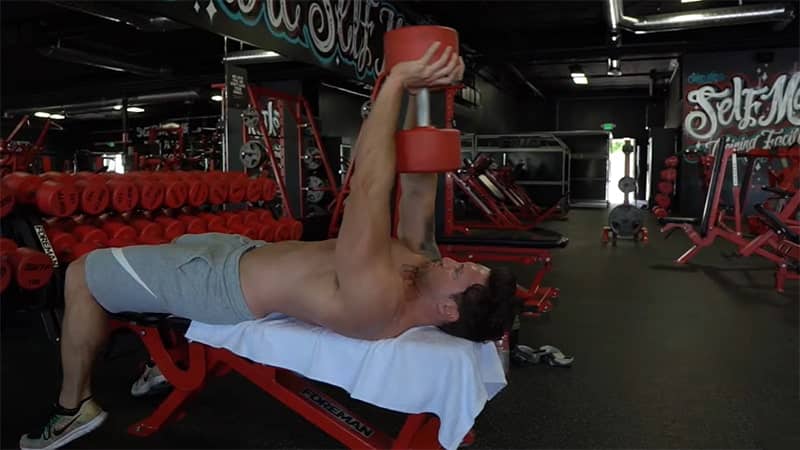
To do a dumbbell pullover, lie down on a bench that's about waist height with your head and upper body supported and your feet planted on the floor.
Be extra careful because the dumbbell is positioned directly above your face, so start slowly and use light weights.
Hold the dumbbell with both hands above your chest with your arms extended. With your palms facing the dumbbell, use your thumbs and fingers to grab the far end of the dumbbell.
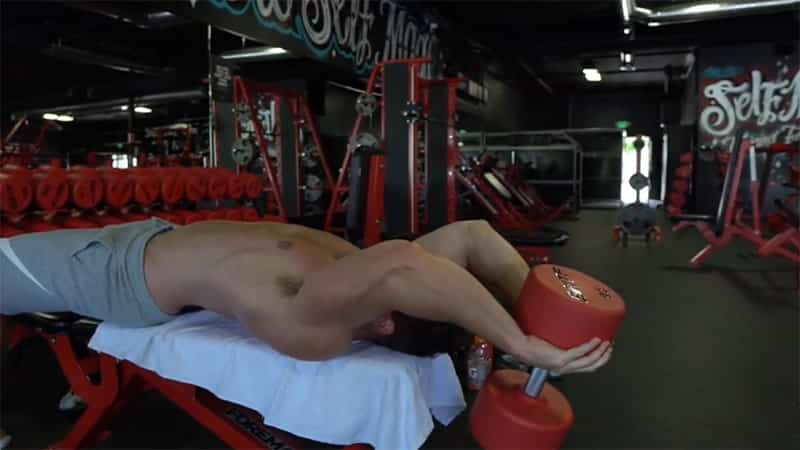
With your core engaged and chest out, lower the dumbbell behind your head until your elbows reach a 90-degree angle. Keep a slight bend in your elbows and do not arch your back. Lower the weight until it is about level with your head, then slowly bring it back up to the starting position.
While doing the dumbbell pullover, do not move your elbows. Keep a tight core, straight wrists, and breathe out as you bring the dumbbells in line with your chest.
Begin doing the dumbbell pullover with a single dumbbell and do two to three sets of six to eight repetitions. Mix the pullover into your existing workout, or do it as a standalone exercise.
Safety Tips For Dumbbell Pullovers

If you can't perform pullovers without bouncing or using momentum, it's an indication that you don't have the necessary shoulder mobility. Likewise, if a pull-up feels like a struggle for you, you need to improve your shoulder mobility to make it easier on your joints.
If you can do a set of each of the following exercises with a complete range of motion, then you should be able to perform the dumbbell pullover with ease: arm circle, sidearm raise, and overhead press. If you can't, then you might want to look at some shoulder mobility routines online and try again in a month or so.
Variations Of The Dumbbell Pullover
If you don't have a flat bench available to do the dumbbell pullover, you can still perform this exercise.
Changing Up Your Equipment
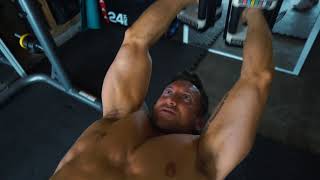
Lie flat on the floor. As you do so, you'll need to move the dumbbell over your head until it touches the floor. Pause for a second, then lower. Be sure to pause with the dumbbell above the floor so you're holding the entire weight in the air.
Using a different piece of equipment can mean heavier lifts and different grip angles. Use an overhand grip when using a barbell. This might limit your range of motion so be sure to have a spotter, just in case you're lifting heavy.
Lat activation exercises, such as standing and using the cable machine with the cable set high, can be useful for developing the upper-back muscles. The lying decline pullover is also a good chest exercise that works the triceps muscles and deltoids because you are lying on a decline bench.
Making The Dumbbell Pullover Easier
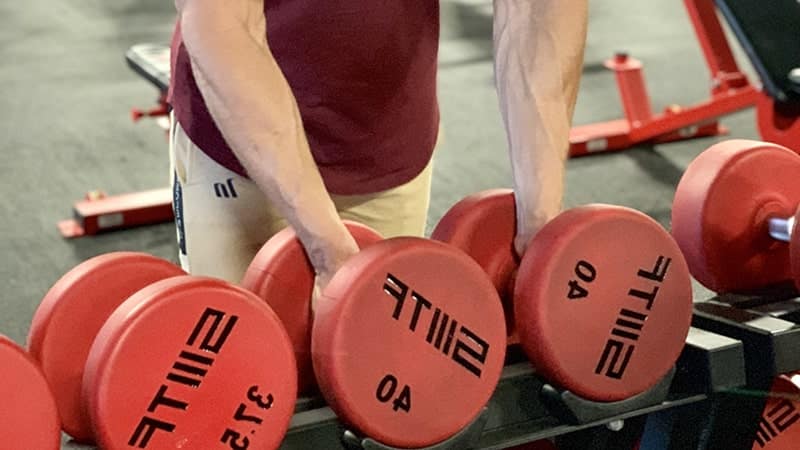
To make the dumbbell pullover easier, choose a lighter weight. Whether it is your first time trying this exercise or the last, always select a weight that allows you to perform all reps with proper form. To regress the pullover, bend your elbows slightly. This will bring the weight slightly closer to your body, decreasing the amount of work placed on your core and lower back when the dumbbell is in its lowest position.
Making The Dumbbell Pullover Harder
To increase the difficulty of the dumbbell pullover, choose a heavier weight. This simple change will increase the load on your chest and back muscles, making each movement more challenging. Hoisting your legs a few inches above the bench will give your core a bit of a workout, too.
In lieu of a bulky weight bench, use an exercise ball instead. Keeping the head and neck supported on the ball, engage the abdominal and gluteal muscles to keep the hips stable and elevated. If there's any movement at all in the hips, this becomes a total body exercise with the lower body supporting and stabilizing and the upper body moving.
You can combine a dumbbell overhead press with a lower leg extension to create a new type of exercise. In this version, you'll start out in the basic position. Then, keeping the knees bent, lift the feet off the floor so that the knees are positioned over the hips. You'll be in a dead bug position with straight legs. Perform one repetition of the dumbbell pullover and finish with the arms straight as you hold in a tabletop position.
Proper Form Tips For Dumbbell Pullovers
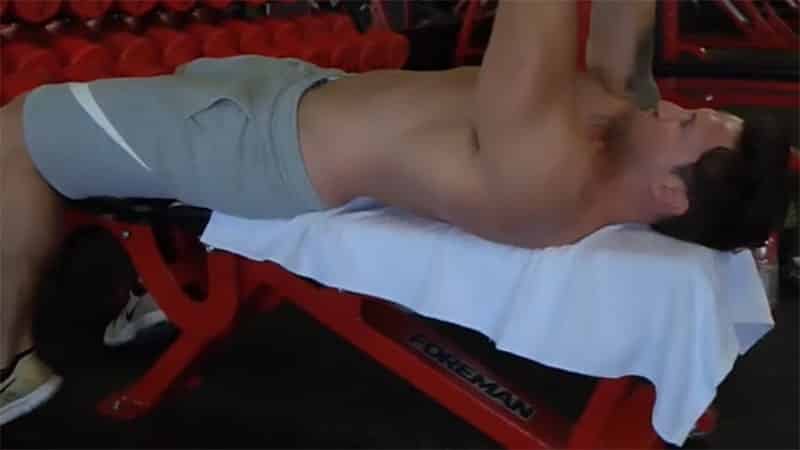
The decline of the classic bench press as the go-to upper body strength exercise probably has something to do with the fact that so few people can do it properly—or without substantial risk of injury.
When performing the dumbbell pullover, make sure to keep your low back pressed against the bench at all times. This will ensure a deep engagement of the core muscles, especially the transverse abdominis and latissimus dorsi.
If you're arching your back up off of the bench during a dumbbell pullover, you're likely not engaging your core fully. This is likely because the weight is too heavy for you, or due to a lack of practice with this move.
If this is the case, you should reduce the weight or try to engage your core more. This will help you stabilize your core and keep it from arching up off of the bench.
Biggest Mistakes You Might Make Doing Dumbbell Pullovers
The dumbbell pullover is a simple exercise, but it's easy to mess up — even experienced athletes can drop the ball.
Most of these mistakes stem from form issues and can be remedied by making subtle improvements to your posture.
Poor Starting Position
Let's say that you're trying to get a toned body, and you have a small weight bench in your basement. You know that by sitting in the middle of the bench, your head and neck will be supported without any issues.
However, if you support the upper body on the bench, while leaving the hips unsupported, you may experience lower back pain in the days following your workout.
Weak Or Disengaged Core
Ensure that your core is well-conditioned before performing any rowing variation. This will help you maintain a strong, neutral spine throughout the exercise.
During the extension phase of the pullover (arms fully extended), you may start to arch through your lower back and abdominal area.
This is especially likely to happen if you have limited mobility through your chest and shoulder area.
To perfect the dumbbell pullover, lower back and abdominal strength is key. The lowering phase of the exercise can put a lot of strain on your back; it's important to maintain good posture and engage your lower abs during this time.
Too Much Wrist Action
You should keep your palms facing each other throughout the full range of movement. This will help you maintain strong wrists. However, the weight might be too heavy if your wrists flop — in that case, you should decrease the amount of weight you're using so that you can keep your elbows as close together as possible.
Uneven Motion
If one side of your body is stronger than the other or has a greater range of flexibility, you may notice that one arm extends further or faster than the other.
Try to move both arms at the same time, keeping the motion even all the way throughout. You don't want the extension on one side to be larger than the other or you'll exacerbate the problem and develop your muscles unevenly.
Muscle Groups Worked By The Dumbbell Pullover
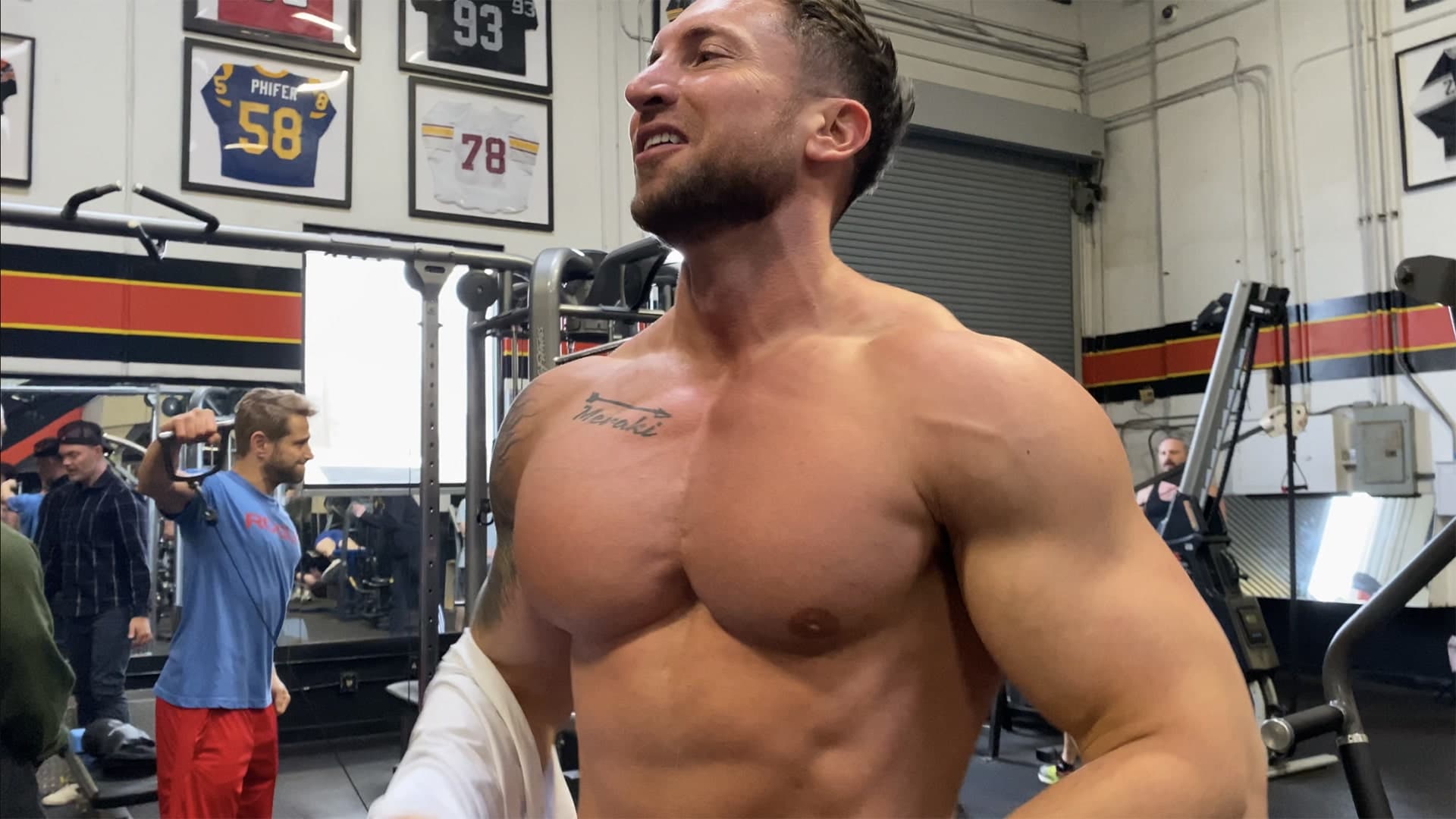
The dumbbell pullover is an upper body exercise concentrating primarily on your lats and pecs. The lats — spanning the length of your back, attaching to your upper arms, and originating in your mid-back and lower back — are a fan-shaped muscle highly involved in pulling and rowing motions. They're assisted by your trapezius and rhomboid muscles, which allow you to move easily.
Front-side chest exercises, such as pullovers, target the pectoralis major and minor. The pectoralis major has two heads, which merge together to form a tendon that attaches to your upper arm bone. The pectoralis minor is situated just below the pectoralis major and attaches to your upper ribs and the front side of your chest.
Apart from the anterior deltoid and triceps brachii, the rhomboids, posterior deltoid, pectoralis minor, and long head of triceps also perform as synergists. The clavicular head of the pectoralis major and triceps brachii act as stabilizers.
Benefits Of The Dumbbell Pullover
The dumbbell pullover offers a few key benefits that include superior shoulder width, improved chest development, and an extremely high strength-to-weight ratio. If you are among the best candidates for this movement (i.e. some people shouldn't do this exercise), then you check out what the dumbbell pullover can do for you:
Increases Upper-Body Strength
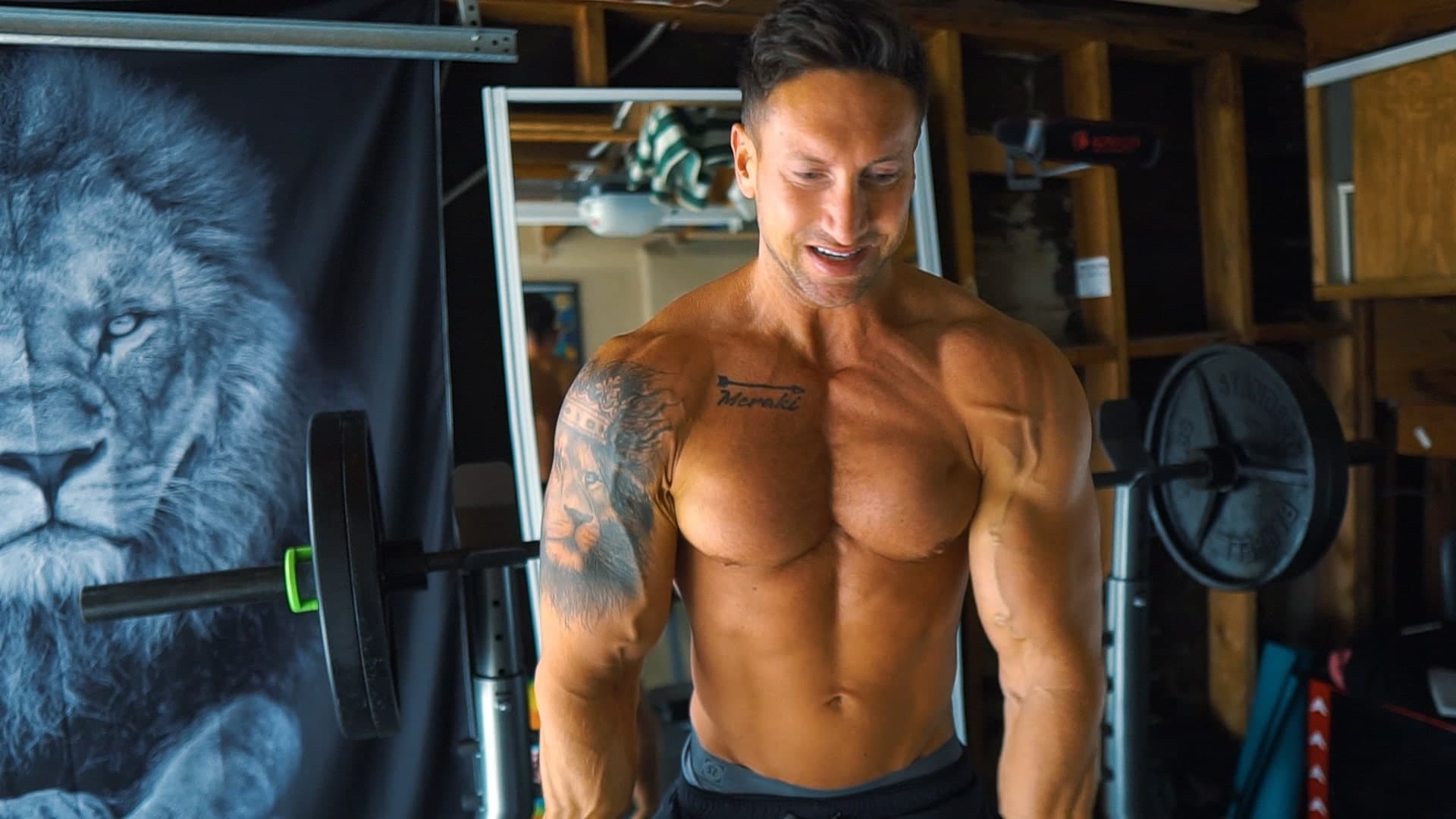
Although considered to be a chest exercise, the dumbbell pullover also effectively works the triceps and lats. So get ready for bigger arms and back muscles. However, contrary to popular belief, it does not work the serratus anterior—the rib muscles.
Dumbbell pullovers are no good for expanding the rib cage. In fact, no exercise ever has been found to expand the rib cage.
However, they do increase muscle mass in all of the areas surrounding the ribs. So, even though they may not expand the rib cage per se, they do have a positive effect on its appearance if used regularly.
More Stability
The dumbbell pullover is a fantastic exercise that can be performed at the end of your chest workout. It will work on your pectoral muscles, but it'll also test many stabilizer muscles throughout your body; specifically those in the upper back/scapular region, the gluteal muscles, and the abdominal area.
Improved Range Of Motion
The dumbbell pullover is one of the best exercises for maintaining and improving flexibility in your chest and shoulder region. The amount of stretching involved in performing this exercise effectively improves your range of motion, which means that you'll be able to move better in all of the things that you do every day.
More Complete Full-Body Workout
You can do some heavy flyes, but it's not a very good idea. In fact, I'd go so far as to say that it's a bad idea. With dumbbell pullovers, however, you get a great stretch in your back and pecs without risking injury.
Flyes are great for targeting the pec muscles, but they're not ideal for really building size. In order to get bigger pecs, it's important to overload them with heavy weight and a full range of motion — which is exactly what the dumbbell pullover does! You don't have to go heavy with this exercise, but it allows you to overload the stretch on your chest so that you give your chest muscles the stimuli they need for growth.
More Efficient Muscle Growth
Few people know this, but one of the best exercises for the lats is actually a great dumbbell pullover exercise for other upper body muscle groups. By doing rows before more complex compound lifts, you'll be able to work your lats directly without other muscles taking away from your sets. This way, you can give the lats their focused attention and truly build them up!
The dumbbell pullover can be modified to hit the muscles in different ways. Using a lighter weight will still work the core. Holding the dumbbell behind the neck will work the shoulders and back. The bar can also be held above the chest if you want to get more out of your deltoid muscles.
Adding volume to your pecs in an unnatural way can stimulate muscle growth. The lat pullover is the only way to isolate your lats, taking out the assistance work of other back muscles and even your biceps. This kind of isolation is the perfect pre-exhaustion exercise for targeting your lats.

